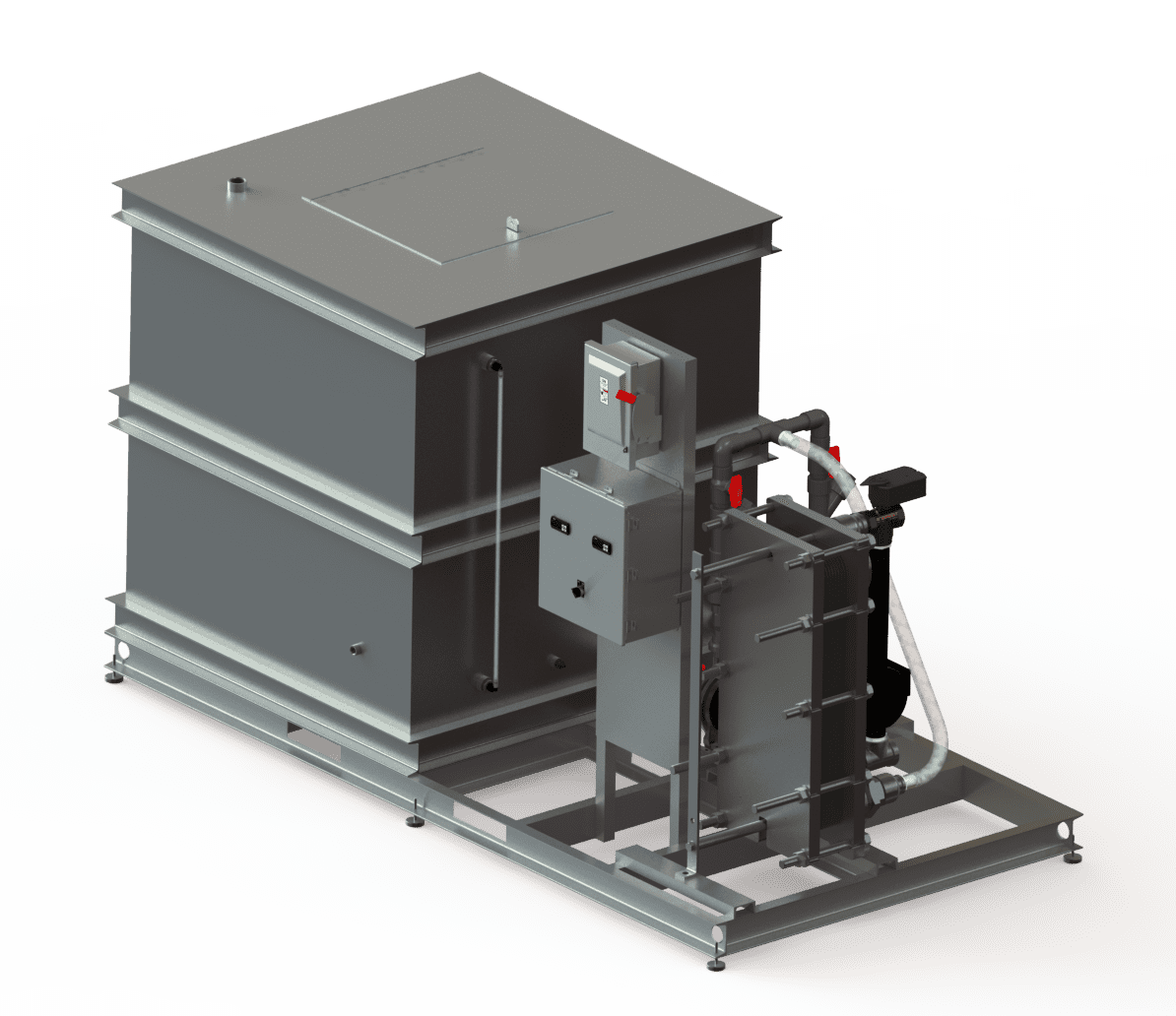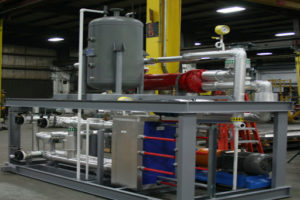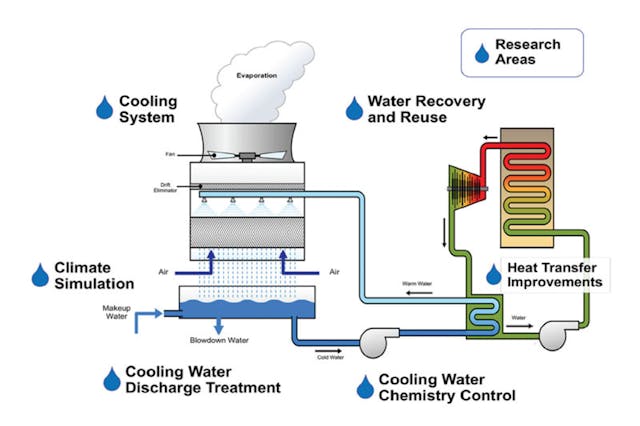The Function of Heat Transfer Systems in Sustainable Power Solutions for the Future
Heat transfer systems are essential in the quest for sustainable energy solutions. They maximize thermal energy administration, improving the performance of renewable innovations. By utilizing mechanisms like transmission, convection, and radiation, these systems reduce power losses. Their duty in solar thermal and geothermal applications is particularly substantial. As developments arise, the capacity for further developments elevates essential questions concerning future energy strategies. What developments will form the landscape of lasting energy?
Comprehending Heat Transfer Solutions

The Relevance of Thermal Energy Management
Effective thermal energy monitoring is crucial for optimizing energy performance and minimizing waste in various systems. By controling temperature level and maximizing Heat transfer procedures, organizations can noticeably reduce power intake and operational expenses. Reliable management entails the implementation of sophisticated modern technologies and practices that check and control thermal conditions within systems, making sure that energy resources are made use of successfully. Additionally, proper thermal energy monitoring adds to minimizing greenhouse gas discharges, lining up with global sustainability objectives. It likewise improves system reliability and performance, bring about enhanced item high quality and longer devices lifespan. Inevitably, prioritizing thermal power administration is a crucial action in the direction of creating much more lasting power services and fostering a responsible technique to power intake in residential and industrial contexts.
Applications of Heat Transfer in Renewable Energy
While different renewable resource sources promise sustainability, the reliable application of Heat transfer plays an important role in their performance. In wind power systems, Heat transfer is utilized for generator part cooling, enhancing efficiency and durability. Geothermal energy counts on effective Heat exchange in between the planet's subsurface and the fluid distributing in the system, maximizing energy extraction. Biomass power processes likewise take advantage of Heat transfer, as it aids in transforming organic materials right into functional gas via pyrolysis and gasification. Furthermore, in hydropower, maintaining perfect temperature levels in tanks can improve power result. Each of these applications demonstrates the vital importance of Heat transfer systems in enhancing sustainable energy modern technologies, eventually adding to a more sustainable energy future.
Enhancing Solar Thermal Power Effectiveness
As solar thermal power systems remain to develop, enhancing their efficiency has ended up being vital for taking full advantage of power outcome. Advancements in Heat transfer innovations, such as boosted thermal storage products and innovative Heat exchangers, play a significant function in boosting performance. By making use of innovative materials that have remarkable thermal conductivity, systems can capture and transfer Heat better. Furthermore, incorporating tracking systems that comply with the sun's path warranties that collectors receive suitable solar direct exposure throughout the day. Utilizing nanotechnology in solar absorbers can further enhance power absorption prices. Moreover, including automated control systems helps manage temperature levels and handle power distribution successfully, leading to decreased losses and enhanced general system efficiency. These improvements lead the way for more sustainable solar thermal energy solutions in the future.
Geothermal Heating: A Sustainable Service
Geothermal heating provides a sensible alternative for lasting power, supplying substantial ecological benefits with reduced greenhouse gas emissions. Its performance and cost-effectiveness make it an eye-catching choice to typical home heating systems. Difficulties related to execution has to be addressed to optimize its prospective effect.
Environmental Benefits of Geothermal
Conventional home heating approaches contribute substantially to greenhouse gas emissions, geothermal home heating provides an engaging option that lessens ecological influence. By utilizing the Planet's interior Heat, geothermal systems make use of a renewable energy source, significantly reducing dependence on fossil gas. This approach generates marginal carbon emissions, making it a cleaner option for domestic and industrial heating. In addition, geothermal systems promote power performance, as they require less energy contrasted to conventional home heating systems. DVS Heat Transfer Systems. The utilization of geothermal energy likewise aids in decreasing air pollution, improving neighborhood air top quality page and public wellness. As a lasting solution, geothermal heating supports climate modification reduction efforts, positioning itself as a crucial component in the change in the direction of a greener future
Efficiency and Cost-Effectiveness
Just how does geothermal heating gauge up in regards to efficiency and cost-effectiveness contrasted to traditional heater? Geothermal heating demonstrates exceptional performance, usually accomplishing a coefficient of efficiency (POLICE OFFICER) of 3 to 5, suggesting it generates 3 to 5 systems of Heat for every single system of power eaten. This performance equates into lower operating costs, especially in areas with stable geothermal sources. First setup expenses can be more than conventional systems; however, long-term cost savings on energy costs and minimized maintenance expenditures can balance out these in advance investments. In addition, lots of federal governments incentivize geothermal systems via refunds and tax credit ratings, boosting their cost-effectiveness. Generally, geothermal heating emerges as a lasting and financially viable alternative to even more conventional home heating services.
Execution Difficulties and Solutions
Numerous challenges can restrain the prevalent implementation of geothermal heating unit, despite their clear benefits as a lasting power service. High first setup prices typically deter property owners and capitalists, making funding a considerable obstacle. have a peek at these guys In addition, the geographical constraints of appropriate geothermal websites limit ease of access in particular areas. Local guidelines and permitting procedures can likewise complicate task growth, causing delays. Public understanding and understanding of geothermal systems continue to be low, preventing approval. To address these difficulties, targeted education and learning projects can enhance public expertise, while federal government incentives could ease economic burdens. Working together with local authorities to improve guidelines may facilitate smoother task authorizations, eventually advertising the adoption of geothermal heating as a viable, lasting energy alternative.
Advancements in Heat Transfer Technologies
Developments in Heat transfer technologies play an important role in boosting power performance and sustainability. Advanced Heat exchangers and phase change materials are at the leading edge of these advancements, using considerable enhancements in thermal management. These technologies not just enhance energy usage yet likewise add to minimizing environmental effect in different applications.
Advanced Heat Exchangers
Advanced Heat exchangers play an essential duty in improving energy performance throughout different applications in sustainable power services. These devices promote the transfer of Heat in between two or more liquids, substantially minimizing energy consumption in processes such as industrial home heating, cooling, and power generation. Advancements in products and design, such as making use of nanofluids and compact setups, have resulted in improved thermal efficiency and decreased size needs. Furthermore, developments in digital surveillance and control systems permit maximized procedure, additional increasing performance. By reducing waste Heat and making best use of energy healing, progressed Heat exchangers contribute to decrease carbon footprints and sustain the shift toward ecologically pleasant innovations. Their proceeded development is crucial for accomplishing international energy sustainability goals.
Phase Change Materials
The combination of phase change materials (PCMs) right into Heat transfer technologies represents a considerable innovation in energy administration and performance. PCMs absorb and launch thermal power during their stage changes, making it possible for reliable temperature policy in building materials and power systems. By storing excess Heat during height durations and launching it when need increases, PCMs contribute to fill changing and power conservation - DVS Heat Transfer Systems. This capability enhances the performance of renewable resource systems, particularly in solar thermal applications. Furthermore, PCMs can enhance the thermal comfort of indoor atmospheres, reducing dependence on conventional heating and cooling approaches. As developments in PCM solutions remain to emerge, their role in lasting energy solutions is poised to grow, providing promising avenues for future research and application

Future Prospects for Heat Transfer in Lasting Power
As the demand for sustainable energy services remains to rise, the role of Heat transfer systems is coming to be increasingly vital fit future modern technologies. Innovations in styles and products are anticipated to boost effectiveness in Heat transfer, reducing power losses in various applications. The integration of sophisticated thermal storage space systems, such as stage change materials and thermochemical storage space, will certainly make it possible for far better monitoring of energy sources. Study into nanofluids and biomimetic Heat exchangers may even more enhance thermal performance. Moreover, the fostering of wise modern technologies will certainly permit for real-time surveillance and flexible control of Heat transfer procedures. These advancements are official source positioned to considerably add to the overall performance and sustainability of power systems, leading the means for a much more energy-efficient future.
Often Asked Concerns
Just How Can Individuals Apply Heat Transfer Systems in your home?

Individuals can apply Heat transfer systems in the house by installing energy-efficient appliances, using radiant heating, and maximizing insulation. These steps enhance power efficiency, reduce costs, and promote lasting practices in domestic atmospheres.

What Are the Expenses Related To Setting Up Heat Transfer Systems?
The costs related to setting up Heat transfer systems vary commonly, normally including devices, setup labor, and upkeep. Aspects such as system kind, home dimension, and regional guidelines substantially affect the total expense entailed.
Exist Government Incentives for Heat Transfer System Installations?
Government motivations for Heat transfer system installments differ by region and can consist of tax obligation discounts, credit scores, and grants. These economic benefits aim to urge adoption, ultimately promoting energy performance and lowering ecological impact within neighborhoods.
Just How Do Heat Transfer Solutions Effect Energy Bills?
Heat transfer systems notably affect energy expenses by maximizing energy performance. By improving the transfer of Heat, these systems minimize power consumption, leading to reduced energy costs and developing a much more lasting method to power administration.
What Upkeep Is Required for Heat Transfer Solutions?
Upkeep for Heat transfer systems consists of regular examinations, cleaning of parts, checking fluid levels, making certain appropriate insulation, and changing worn components. These tasks aid preserve performance, avoid failures, and extend the system's operational lifespan.
These systems promote the movement of thermal power from one tool to another, making it possible for the transfer of Heat for cooling, heating, or power generation purposes. Geothermal power counts on effective Heat exchange between the earth's subsurface and the fluid flowing in the system, maximizing power extraction. Furthermore, geothermal systems promote energy effectiveness, as they need much less power contrasted to traditional heating systems. Advanced Heat exchangers play a crucial role in enhancing energy effectiveness throughout numerous applications in lasting power remedies. Heat transfer systems notably influence power costs by optimizing power effectiveness.